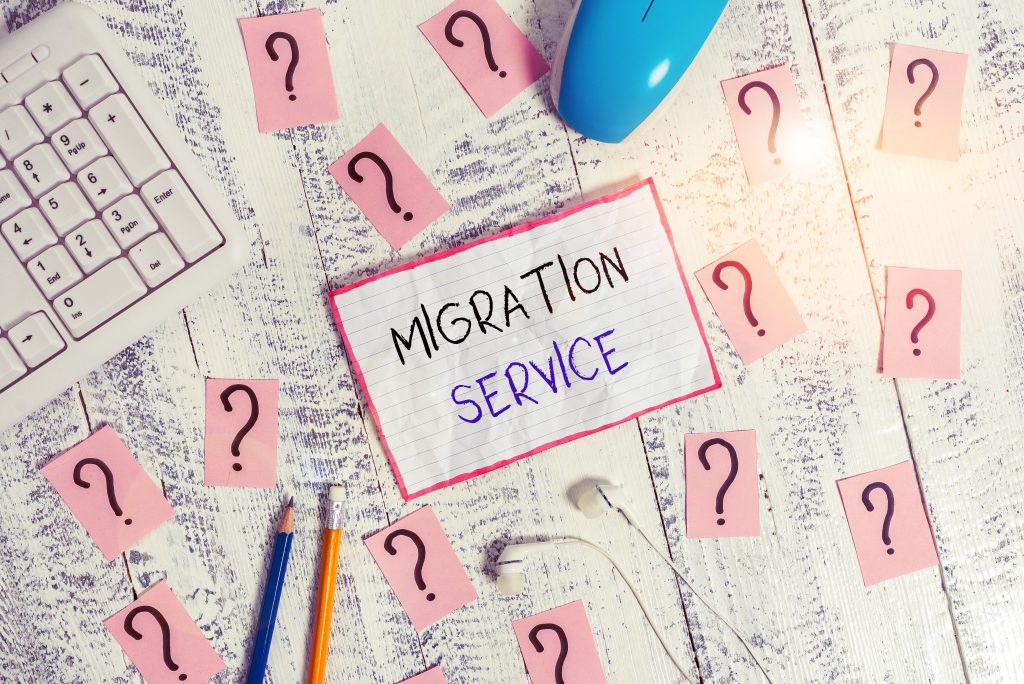
How to Successfully Migrate a Tech Stack
Are you planning to migrate the technologies that power your business systems to a different platform? Here’s a guide to successful tech stack migration.

Are you planning to migrate the technologies that power your business systems to a different platform? Here’s a guide to successful tech stack migration.
Few things are certain in IT. One thing that is certain is change, though. Systems go out of date, new technologies launch, and better ways of doing things emerge. Tech stack migration can be a complex task. It’s not something that should be taken lightly, especially if your business relies on outdated technology to stay secure, remain competitive, or function at all.
But with careful planning and execution, you can successfully migrate your tech stack to a new platform. This guide will walk you through the process step-by-step and help make sure that your migration goes as smoothly as possible!
Briefly, let’s define what we’re aiming to achieve. Tech stack migration means changing your current technology platform or systems.
Currently, many businesses rely on a combination of software and hardware that they use in their day-to-day operations. This can include things like customer relationship management tools (CRMs), enterprise resource planning systems (ERPs), accounting platforms such as QuickBooks, and even email servers.
When it comes time to migrate to a new platform or system, you have three primary options:
Each of these options has its own set of pros and cons. Which is right for your business?
The eCommerce company Etsy recently did a big high profile tech stack migration and shifted from React v15.6 to Preact. They managed it in-house really well, then started to reap the benefits of it right away.
Spotify also recently underwent a massive technology stack migration to improve internal communication inside the company.

The first step in this situation is creating a technology migration plan. This plan should include all of the steps that you will take during the migration process, as well as a timeline for each step. So whether you need to migrate your web or mobile app, do the research first and choose the right new stack.
Here’s an example plan.
Start by mapping out what functionality will be transferred over in order of importance. For example, email integration is probably more important than a custom report builder).
Prepare a migration plan for all customer data from your old CRM to the new one. This should include a list of contacts, leads, and deals that were closed within each month for at least two years before the migration.
Make sure that all existing integrations are compatible with your new platform or service. If some software isn’t compatible with the new platform you can source a new like-for-like solution or build one.
You can also migrate your tech stack service by service with a set schedule, rather than scrambling to update everything at once.
Find out what steps will be required to make these changes happen — coding or data migration, for example. You may also want to hire a specialist team (like us!) who specializes in tech stack migrations if this is too much for your in-house team to handle.
In the tech world, things move at breakneck speed. To stay ahead of the trends and provide your customers with the most value, you must update your systems frequently. Here at Applandeo, we can assist you in updating your applications by upgrading them to more efficient technologies and paradigms.
Once you have an idea about what needs migrating and how long it may take, start planning out your timeline for this process. It’s important to be realistic rather than optimistic when estimating timescales so that there are no surprises along the way!
When you’ve planned out what moves where and a schedule that prioritizes your core operations, it’s time to start the migration process.
The first step is usually moving your data over to the new platform or service. This can be as easy as migrating to Salesforce from an old CRM, or as complex as rebuilding an entire custom application with a new framework.
The next step is to make sure that all of your integrations work on the new system, and if not, then you’ll need some time to fix them or find replacements before migrating anything else over there permanently.
A testing phase should therefore be carried out. This will ensure that everything works as expected before being deployed to production.
The final step is migrating your application code and any other assets over to the new system, which should be pretty straightforward if you’ve done it right so far!
Once everything has been migrated successfully, it’s time to celebrate.

Take the time to think about what needs migrating and how you can make this happen efficiently with as little disruption to the usual workflow of the business as possible.
If you’re updating your systems because you are replacing old servers you can keep the old servers online concurrently while you install the new ones. Then, duplicate data and software on the new servers and run tests while your employees are home in the evenings and at weekends.
A phased tech stack migration strategy should be used when migrating from one host to another. If you still feel lost in the planning phase it can be useful to audit your stack.
To do this, make a list of every single piece of software and hardware that your company uses. Then, research the alternatives that are available on the new platform.
If you hit a stumbling block in this phase, it’s easy to resolve. For example, you used a piece of software for years but it has been discontinued. You can work with a team like ours to make a custom version of it just for your company as part of your new tech stack.
The purpose of a good plan is to see what problems you might encounter further down the road and to create a mitigation plan for them.
Technology is always evolving, so it’s important to have a plan in place that takes this into account. Applandeo can help you stay ahead of the curve by upgrading your applications to more efficient technologies and software solutions.
Tech stack migrations can be complex, but with careful planning and execution, they don’t have to be a nightmare.
At Applandeo, we specialize in helping businesses make these difficult changes as seamlessly as possible. Contact us today for more information!
 Hi, I’m Marcin, COO of Applandeo
Hi, I’m Marcin, COO of Applandeo
Are you looking for a tech partner? Searching for a new job? Or do you simply have any feedback that you'd like to share with our team? Whatever brings you to us, we'll do our best to help you. Don't hesitate and drop us a message!
Drop a message